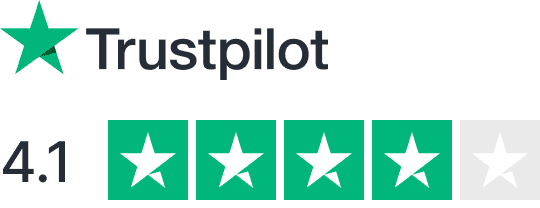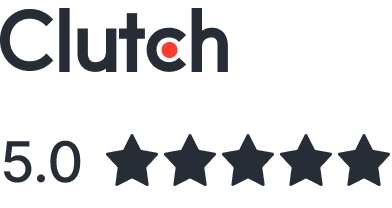Staff augmentation is a flexible hiring model that helps businesses quickly address skill gaps, scale teams for growing projects, and meet tight deadlines without the long-term commitment of traditional hiring. Here are 8 clear signs your business might need this approach:
- Lack of Expertise: Your team lacks specific skills for a project.
- Rapid Project Growth: Projects are expanding faster than your team can handle.
- Budget Constraints: You need to save on full-time hiring costs like benefits and training.
- Tight Deadlines: You’re under pressure to complete projects quickly.
- Specialized Skills: Niche or advanced expertise is required for certain tasks.
- High Turnover: Frequent staff changes are disrupting your workflow.
- Limited Local Talent: You can’t find the right talent locally.
- Temporary Workload Spikes: Short-term demands don’t justify permanent hires.
Quick Comparison: Staff Augmentation vs. Traditional Hiring
| Aspect | Traditional Hiring | Staff Augmentation |
|---|---|---|
| Flexibility | Permanent roles, long onboarding | Temporary, rapid onboarding |
| Cost Structure | Fixed salary + benefits | Pay-as-you-go, project-based |
| Management | Full control by company | Directly managed with less admin |
| Scalability | Limited by HR processes | Easily adjustable for projects |
Staff augmentation provides a fast, cost-effective way to meet project demands while maintaining control over outcomes. It’s particularly useful for managing temporary needs or accessing global talent pools for specialized skills.
5 Benefits of Staff Augmentation Services Over Traditional Hiring Methods
Understanding Staff Augmentation
Staff augmentation is a hiring model that allows businesses to bring in specialized talent as needed, skipping the lengthy process of traditional recruitment.
Key Features and Benefits
This model offers fast scalability and flexible staffing options, making it a practical way to cut project timelines by up to 50% and reduce operational costs by up to 30%.
"Staff augmentation provides the skills you need, when you need them, without long-term commitments."
| Benefit | Impact |
|---|---|
| Cost Savings | Avoids expenses related to hiring, benefits, and training |
| Time Efficiency | Skips the time-consuming recruitment process |
| Risk Management | Lets teams expand or contract based on project requirements |
| Expertise Access | Quickly brings in professionals with specialized skills |
Comparing Hiring Methods
Here’s a quick look at how staff augmentation stacks up against traditional hiring methods:
| Aspect | Traditional Hiring | Staff Augmentation |
|---|---|---|
| Flexibility | Lengthy onboarding, permanent roles | Rapid start, adjustable durations |
| Cost Structure | Fixed salary plus benefits | Pay-as-you-go, project-based costs |
| Management | Full control by the company | Managed directly with less admin |
| Scalability | Limited by HR processes | Easily expandable in any sector |
To make staff augmentation work smoothly, businesses should focus on setting up clear communication channels, outlining a well-defined project scope, and ensuring structured onboarding. These steps help integrate temporary team members seamlessly into existing workflows, keeping productivity on track.
Next, we’ll dive into how to determine if this approach aligns with your business needs.
sbb-itb-a3fbb4e
8 Signs You Need Staff Augmentation
Knowing when to bring in extra help can keep your business running smoothly and ensure projects stay on track. Here are some clear signs it might be the right time to consider staff augmentation.
1. Gaps in Team Expertise
If your team doesn’t have the skills needed for a specific project, staff augmentation can fill those gaps quickly. This means you can bring in professionals with the exact expertise required, without the delay of a lengthy hiring process.
2. Rapidly Expanding Projects
When projects grow faster than expected, you need to scale your team just as quickly. Staff augmentation helps you handle sudden growth by adding the right people at the right time.
3. Tight Budgets for Hiring
Hiring full-time employees comes with added costs like benefits and training. Staff augmentation allows you to save on these expenses while still getting access to skilled professionals for specific project needs.
4. Pressing Deadlines
If you’re racing against the clock, staff augmentation can provide experienced professionals who can jump in right away. This ensures your project stays on track without sacrificing quality.
5. Specialized Skills Required
Some projects demand expertise in niche or advanced technologies. Staff augmentation connects you with professionals who already have the know-how to tackle these challenges effectively.
6. High Turnover Rates
Frequent staff changes can disrupt your workflow. Temporary skilled professionals can step in to keep projects moving forward while you address the root causes of turnover.
7. Limited Local Talent
When local hiring options fall short, staff augmentation opens the door to a global talent pool. This not only broadens your choices but also introduces fresh ideas and perspectives to your projects.
8. Temporary Workload Spikes
Short-term increases in workload don’t always justify hiring permanent staff. Staff augmentation lets you scale up your team temporarily, ensuring you meet demands without overcommitting resources.
For staff augmentation to be effective, you need clear communication and well-defined project goals. This approach keeps you in control while benefiting from external expertise and added flexibility.
Next, let’s look at how to put staff augmentation into action for your business.
How to Use Staff Augmentation
Once you’ve decided to use staff augmentation, making it work requires thoughtful planning and a clear process.
Adding New Team Members
To integrate new team members effectively, you’ll need a solid project management system. This includes using the right tools and holding regular meetings to keep everyone on the same page. Key steps to focus on:
- Define project scope and document everything to avoid confusion.
- Provide immediate access to necessary resources so new team members can hit the ground running.
- Create opportunities for regular collaboration to build a cohesive team.
Solving Common Problems
When working with augmented staff, communication and coordination can sometimes be tricky. To tackle these issues, set up clear protocols and reliable communication channels.
Here’s a quick guide to managing common challenges:
| Challenge | Solution | How to Implement |
|---|---|---|
| Communication Gaps | Establish clear communication | Use regular updates and virtual meetings |
| Team Integration & Alignment | Encourage structured collaboration | Organize team activities and track progress |
| Knowledge Transfer | Build a documentation system | Use project wikis and process guides |
To make sure your approach is working, keep an eye on these metrics:
- Project completion times to ensure deadlines are met.
- Budget adherence to avoid overspending.
- Quality of deliverables for meeting project standards.
- Team satisfaction levels to maintain morale and productivity.
The key to success with staff augmentation is keeping communication open and tracking progress consistently. Tools like daily updates, weekly reviews, and project management software can help keep everyone aligned and moving forward effectively.
Next Steps and Future Trends
The world of staff augmentation is changing rapidly, driven by shifting business priorities and advances in technology. While traditional hiring methods take an average of 41 days to fill a position, staff augmentation offers faster solutions for meeting urgent demands.
Here are three major trends shaping the future of staffing:
Technology-Powered Transformation
With remote work and AI leading the way, staff augmentation is becoming more efficient. Digital platforms make it easy to tap into global talent pools, and AI tools speed up the process of matching businesses with the right professionals – cutting the timeline from weeks to just days.
Flexible Work Arrangements
Companies are moving away from rigid contracts and opting for more flexible setups. These arrangements allow teams to scale quickly based on project needs, helping businesses stay agile while managing their resources wisely.
Integrated Digital Collaboration
To succeed with modern staff augmentation, businesses need tools and systems that support seamless virtual teamwork. This includes clear communication protocols, performance tracking, and collaboration platforms that ensure smooth operations across distributed teams.
"Staff augmentation is no longer anywhere close to a ‘last resort’. It is on its way to becoming the preferred mode of hiring."
These trends address challenges like skill shortages and tight project deadlines. By embracing these shifts, organizations can use staff augmentation to:
- Access talent from around the globe with ease
- Cut down on hiring time
- Scale teams quickly to meet project requirements
- Manage costs without sacrificing quality
The key to success lies in balancing flexibility with team cohesion. Companies that adapt to these changes will not only make the most of staff augmentation but also stay competitive in their industries.
















